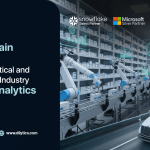Key Data Engineering Gaps Impacting Seamless AI Success
Achieving seamless Al success hinges on a robust data engineering foundation. Yet, many organizations encounter critical gaps in their data processes and infrastructure that create bottlenecks for Al initiatives. These gaps include:

Fragmented and
Siloed Data Sources
Data is scattered across departments, tools, or cloud platforms, making it difficult to unify for Al use cases

Lack of Real-Time Data Processing Capabilities
Al models need fresh data, but outdated pipelines slow down insights and decision-making

Poor Data Quality and
Inconsistencies
Missing values, duplicates, and incorrect data lead to inaccurate Al outputs and decision risks for organizations

Inefficient and Manual Data Pipelines
Legacy processes and heavy reliance on manual data handling increase errors and delay Al deployments

Limited Automation and Monitoring
Without robust automation and observability, it's hard to ensure reliable data flow for production AI
Driving AI Excellence with Robust Data Engineering
At DiLytics, we specialize in building robust data pipelines, infrastructure, and governance layers that provide AI/ML models with reliable, high-quality, and scalable data. Our service ensures that your organization’s data ecosystem is optimized for seamless integration and continuous flow from various enterprise systems, empowering your AI initiatives with a solid foundation.
Scope of Work for AI-Optimized Data Engineering

Data Source Identification & Ingestion
Ingest data from ERP, CRM, IoT, APIs, and unstructured sources. Set up batch/streaming pipelines

Data Lake/Warehouse Setup
Configure a central data repository (Snowflake, Databricks) for structured and unstructured data

Data Cleaning & Transformation
Handle missing values, duplicates, and apply feature engineering (normalization, embeddings)

Metadata &
Governance
Implement data catalogs for discoverability and ensure data lineage and governance

Data Quality & Monitoring
Automate data validation, detect anomalies, and monitor pipeline health

Security &
Compliance
Apply encryption, access control, and ensure compliance with GDPR, HIPAA, and SOX
Our Methodology for AI-Optimized Data Engineering Offering
Timeline for Seamless AI Data Engineering Offering is approximately 10 weeks.
-
Step 1
- Discovery & Assessment
-
Step 2
- Architecture Design
-
Step 3
- Pipeline Development
-
Step 4
- Data Processing & Feature Engineering
-
Step 5
- Governance & Quality Assurance
-
Step 6
- Deployment & Handover
What You Gain with Al-Ready Data Engineering
Al is only as powerful as the data that drives it. Without well-engineered data pipelines and integrated systems, even the most advanced Al models can fall short. DiLytics helps organizations build the solid data infrastructure needed to ensure Al initiatives are accurate, scalable, and impactful. Below are the key benefits you get when you invest in Data Engineering for Al with DiLytics.
Ensure AI models are powered by clean, consistent, and high-quality data
Deploy AI faster with streamlined process from data collection to model readiness
Enable seamless scaling for new AI workloads across enterprise systems
Embed data security, lineage, and regulatory compliance at every layer
Frequently Asked Questions: Data Engineering for AI
1. How do you ensure data from multiple systems is effectively unified for AI?
2. What measures guarantee the accuracy and consistency of the data powering models?
3. How is data security and privacy maintained across the pipeline?
4. Can your solution support both real-time analytics and large-scale batch processing?
5. How do you handle scaling data pipelines as business needs grow?
Get Started
Are you ready to empower your organization with AI intelligence? Our analytics solutions are designed for various industries to support faster innovation, better decision-making, and enhanced operational efficiency.
You can schedule a consultation with our experts and explore various analytics solutions specially designed for your organization. Request a demo, explore our AI-powered use cases, and learn how they can help you achieve your organizational goals.



